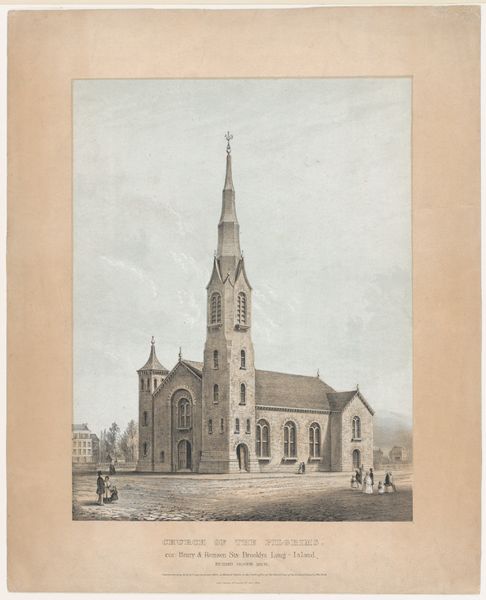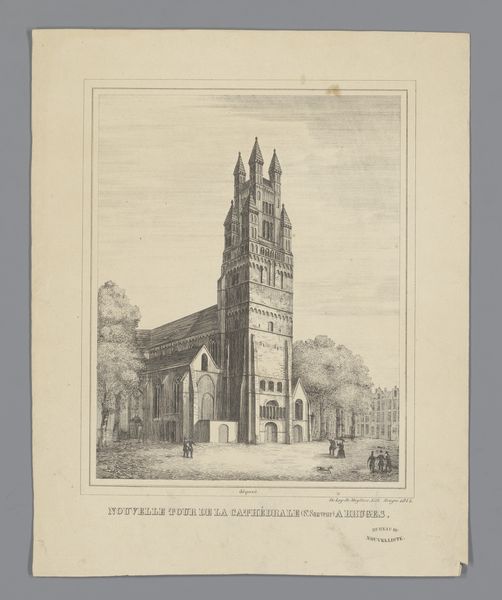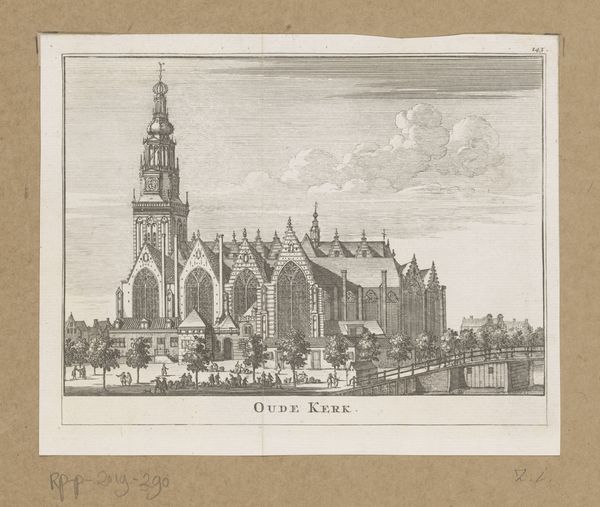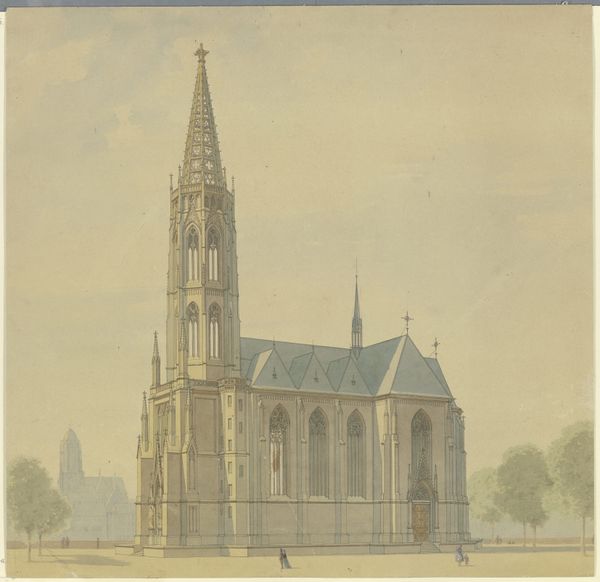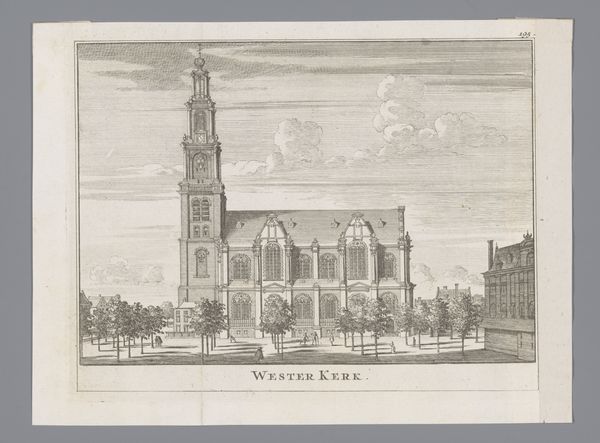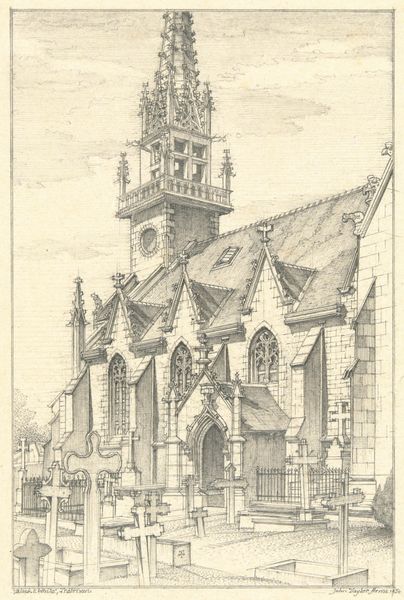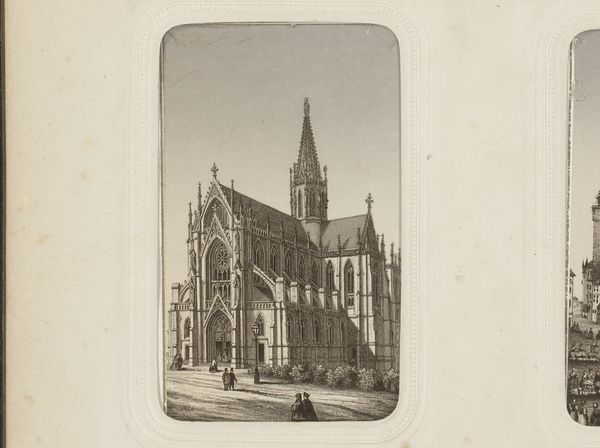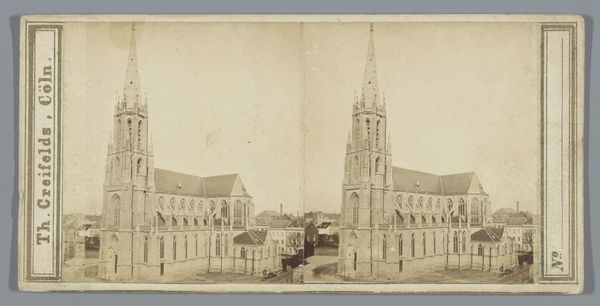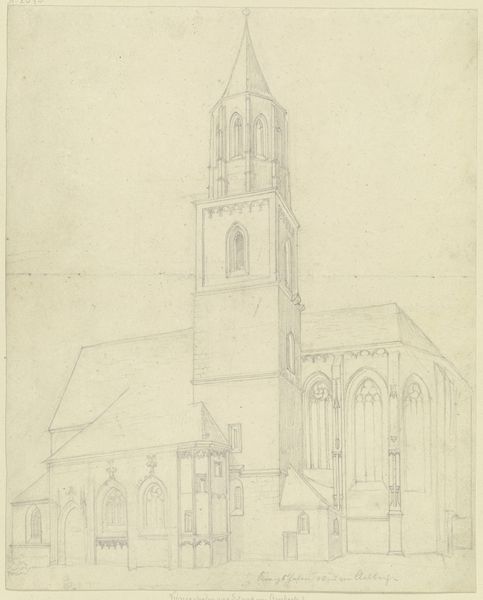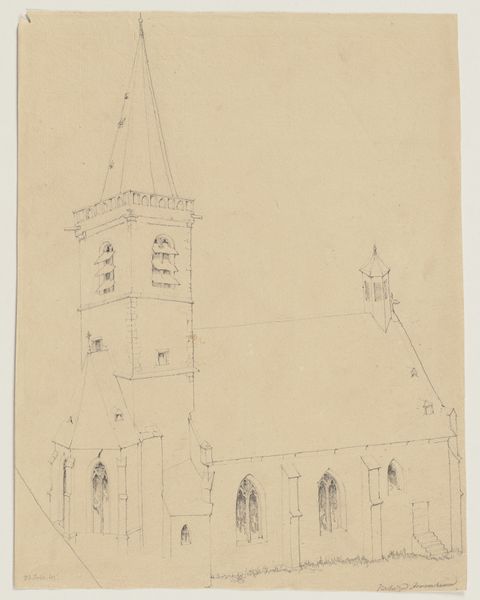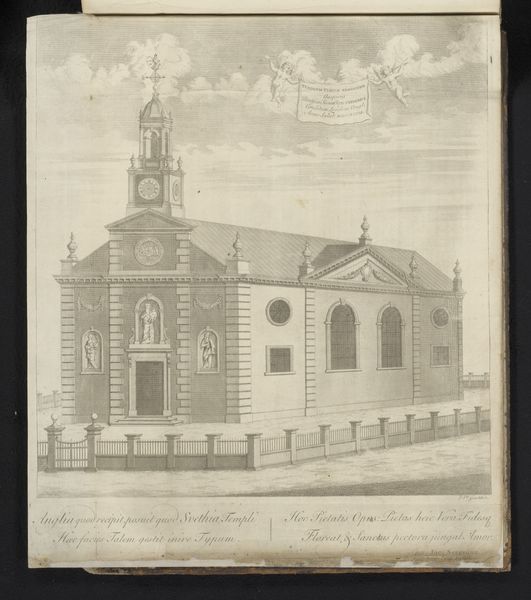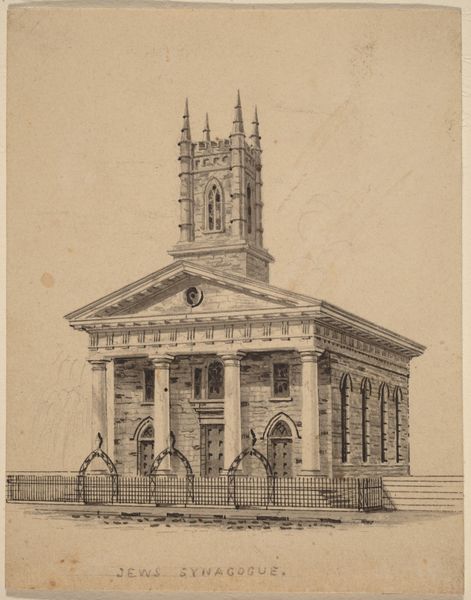
Dimensions: height 456 mm, width 315 mm
Copyright: Rijks Museum: Open Domain
Curator: Let’s explore this finely detailed rendering of the Sint-Laurenskerk in Alkmaar, produced sometime between 1826 and 1886 by Léon Gaucherel. It’s presented as a print, utilizing drawing and engraving techniques. Editor: The detail is captivating. Immediately, I'm drawn to the interplay of light and shadow defining the church’s façade. It projects an atmosphere of solemn grandeur, typical of the period it's conceived within. Curator: Exactly. The image offers insight into the urbanization and religious identity of Alkmaar during this time. Note how the church dominates the skyline, a powerful symbol, perhaps reflecting the sociopolitical authority intertwined with religious institutions of the day. Editor: It’s more than just an architectural depiction, though, isn’t it? It provides a visual document of labor too. We can almost see the engraver painstakingly etching each line to create this reproduction. And the availability of such images hints at shifting notions of art and accessibility, allowing a broader public to “own” these cultural treasures. Curator: An interesting point about democratization. Consider too the Romantic style adopted here. We can understand the picturesque quality of this artwork by reading other narratives about national and religious identity that may emerge around the Church as it is perceived at this historical time. What might its steeple represent in contrast to its location relative to the water in front? Editor: Indeed, Romanticism certainly informed the materials used—consider the availability of specific inks and papers, their properties guiding the level of detail achievable and influencing the final atmospheric effect. Curator: It serves as an archive of cultural ideologies surrounding labor. The Church building, as we understand now, underwent transitions that reflect the shift in modes of worship as social ideas also went through changes. This building then becomes a visual document. Editor: Precisely, a material manifestation of changing attitudes towards faith and labor and progress, wouldn’t you say? A layered document, if you will, far beyond just a picturesque church portrait. Curator: I agree. Analyzing it has highlighted, for me, how artworks function not just as visual spectacles but also as echoes of complex histories and socio-political realities. Editor: And for me, it has reinforced that understanding materials and methods of creation are just as valuable as deconstructing what the art intends to communicate.
Comments
No comments
Be the first to comment and join the conversation on the ultimate creative platform.
